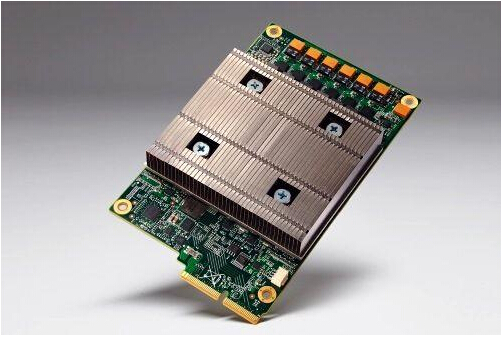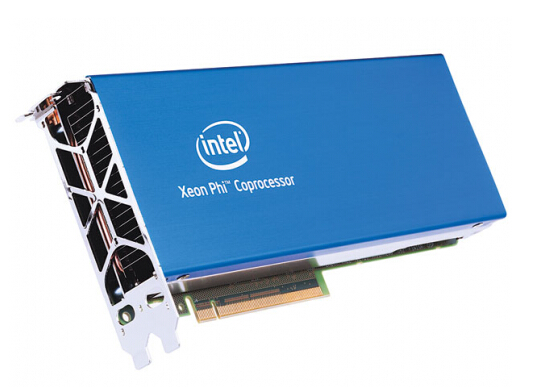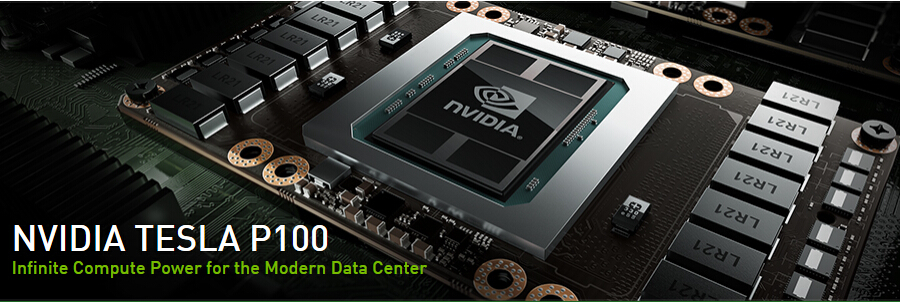Artificial intelligence will promote a new round of computing revolution. Deep learning requires massive data parallel computing. Traditional computing architecture cannot support the massive parallel computing needs of deep learning. Therefore, deep learning requires new underlying hardware that is more adaptive to such algorithms to speed up the computational process.
In response to the needs of artificial intelligence and deep learning, the chip is also put forward higher requirements in terms of speed and low energy consumption. Currently, GPUs and FPGAs are not artificial intelligence custom chips, which have natural limitations, except for the most obvious advantages. In addition to the GPU, there are also many typical artificial intelligence chips.
First, Google - TPU (Tensor Processing Unit) is Google's tensor processor

The TPU is a custom-tailored machine for machine learning. It has been trained in specialized deep machine learning and has higher performance (per watt of computing power). In general, it has a 7-year lead over the current processor, a higher degree of tolerance, and can squeeze more operating time per second in the chip, using a more complex and powerful machine learning model to make it faster. With deployment, users will get smarter results more quickly.
According to a blog post by Norm Jouppi, a prominent hardware engineer at Google, the accelerator was used in Google’s data center more than a year ago: “TPU has launched many Google apps, including improved search. RankBrain for engine result relevance and improved accuracy and quality of maps and navigation in Street View."
Google’s TPU, developed specifically for artificial intelligence, is suspected of posing a threat to the GPU. However, Google said that its TPU will not compete directly with Intel or NVIDIA.
Second, China Star Micro - China's first embedded neural network processor (NPU) chip

On June 20 this year, Zhongxingwei took the lead in launching China's first embedded neural network processor (NPU) chip, which is the world's first embedded video capture compression coding system-level chip with deep learning artificial intelligence, named "Starlight" Smart One." This deep learning-based chip is used in face recognition, with a maximum accuracy of 98%, which exceeds the recognition rate of the human eye. The chip was mass-produced on March 6 this year, and the current shipments are over 100,000.
The NPU adopts a "data-driven" parallel computing architecture. The single NPU (28nm) consumes only 400mW, which greatly increases the ratio of computing power to power consumption. It can be widely used in high-definition video surveillance, intelligent driving assistance, and unmanned. Embedded machine vision fields such as machines and robots.
Third, Intel - Intel processor (CPU) in a non-traditional sense

The second-generation Xeon Phi processor developed by Intel fits perfectly with the needs of artificial intelligence. Xeon Phi is not a traditional Intel processor (CPU). The latest Xeon Phi coprocessor has up to 72 cores, and each core has two Intel AVXs that provide better single-core floating-point performance. -512 SIMD processing units, so these processors are ideal for running machine learning/deep learning tasks.
Fourth, the most interesting thing under the artificial intelligence is the number of GPUs.
GPUs were first introduced to deep learning because of their parallel computing advantages, and NVIDIA, the global leader in programmable graphics processing, has begun to build new computing platforms. At present, the leader in artificial intelligence research, including technology giants such as Google, Facebook, and Microsoft, is already using the chip products provided by NVIDIA for research in this field.
Facebook's artificial intelligence hardware platform Big Sur is built on Nvidia's GPU. GPUs are widely used in artificial intelligence because they have more processing cores than Intel's traditional processors, making them ideal for the massive calculations required by AI software. The "Big Sur" design features an easy-to-repair motherboard with eight NVIDIA Tesla M40s.
(1) What is the meaning of GPU in the field of artificial intelligence? NVIDIA's graphics processing unit (GPU) is designed for image computing on PCs, workstations, game consoles and some mobile devices. It is the "heart" of display cards. The company is moving from a graphics card supplier to an artificial intelligence server vendor.
GPUs play a huge role in the "deep learning" world because GPUs can process large amounts of trivial information in parallel. Deep learning relies on a network of nervous systems—a network that is highly similar to human brains—and the purpose of such networks is to analyze massive amounts of data at high speeds. For example, if you want to teach the network how to recognize the cat's appearance, you have to give it a lot of pictures of the cat. The GPU is good at the rapid processing of massive data.
For artificial intelligence and deep learning, current hardware acceleration relies primarily on the use of graphics processing unit (GPU) clusters as general purpose computing graphics processing units (GPGPUs).
Compared to traditional general-purpose processors (GPPs), the core computing power of GPUs is orders of magnitude more numerous and easier to perform parallel computing. In particular, NVIDIA's CUDA, as the most mainstream GPGPU writing platform, is used by all major deep learning tools for GPU acceleration.
(2) What are the advantages of GPU? The most obvious advantage of GPUs is faster processing speed. Compared to CPU, one of the big advantages of GPU is high speed. The latest research from the "Cambrian" team, the best artificial intelligence hardware research project in the country, shows that the GPU can provide an average of 58.82X times the CPU speed. Another big advantage of GPUs is that their energy requirements are much lower than CPUs.

The latest Tesla P100 graphics processing chip dedicated to artificial intelligence research claims that the company has invested $2 billion in the development of this GPU. It can perform deep learning neural network tasks at a speed 12 times faster than NVIDIA's previous high-end systems, and it is expected that new products will greatly push the limits of machine learning.
Huang Renxun said at the press conference in early April that the total value of the artificial intelligence market will be about 500 billion US dollars in the next 10 years. He said that in-depth learning has accelerated our performance. This is a new computing model that uses the GPU's large-scale processing power to learn artificial intelligence algorithms. Its popularity is sweeping through one industry after another, driving the demand for our graphics processor market to grow.
RCA Cables can be used to connect a variety of audio and video devices, such as camcorders, to TVs or stereos to speakers. Most high-end camcorders have all three RCA jacks, so the signal entering or leaving the device goes through three separate channels-one video and two audio-resulting in a high-quality transfer. Lower-end camcorders usually have only one jack, called a stereo jack, which combines all three channels. This results in lower-quality transfers because the signal is compressed. In either case, RCA cables transmit analog, or non-digital, signals. Because of this, they cannot be plugged directly into a computer or other digital device. RCA cables connect amplifiers to all sorts of devices.
Ucoax OEM Cable Assembly RCA Cables
Quality of RCA Cables
Several factors affect the quality, price, and performance of RCA cables:
Materials: The connectors on RCA cables are often gold, silver, or copper. As you might expect, the gold connectors are the most expensive. They're also better than silver and copper connectors at preventing oxidation, but not as good at electrical conductivity. The silver connectors are best for electrical conductivity with the copper cables coming in a close second and the gold cables falling far behind. Other suitable materials are nickel, zinc, and tin.
Cable Length: Cable length has a negative effect on signal quality. Buy a cable that is only as long as you need it to make the connection for the best signal quality.
Shielding: A well-shielded cable delivers a better signal than one that lacks robust shielding.
The other end of the cable: If possible, match the material used in the other end of the cable to the material used in the connectors. Don't match tin with gold or silver with gold. Those combinations can cause problems because of an electrolytic reaction.
High Quality RCA Cables, Male to Male RCA Cable, RCA Cables for HDTV
UCOAX , https://www.ucoax.com
